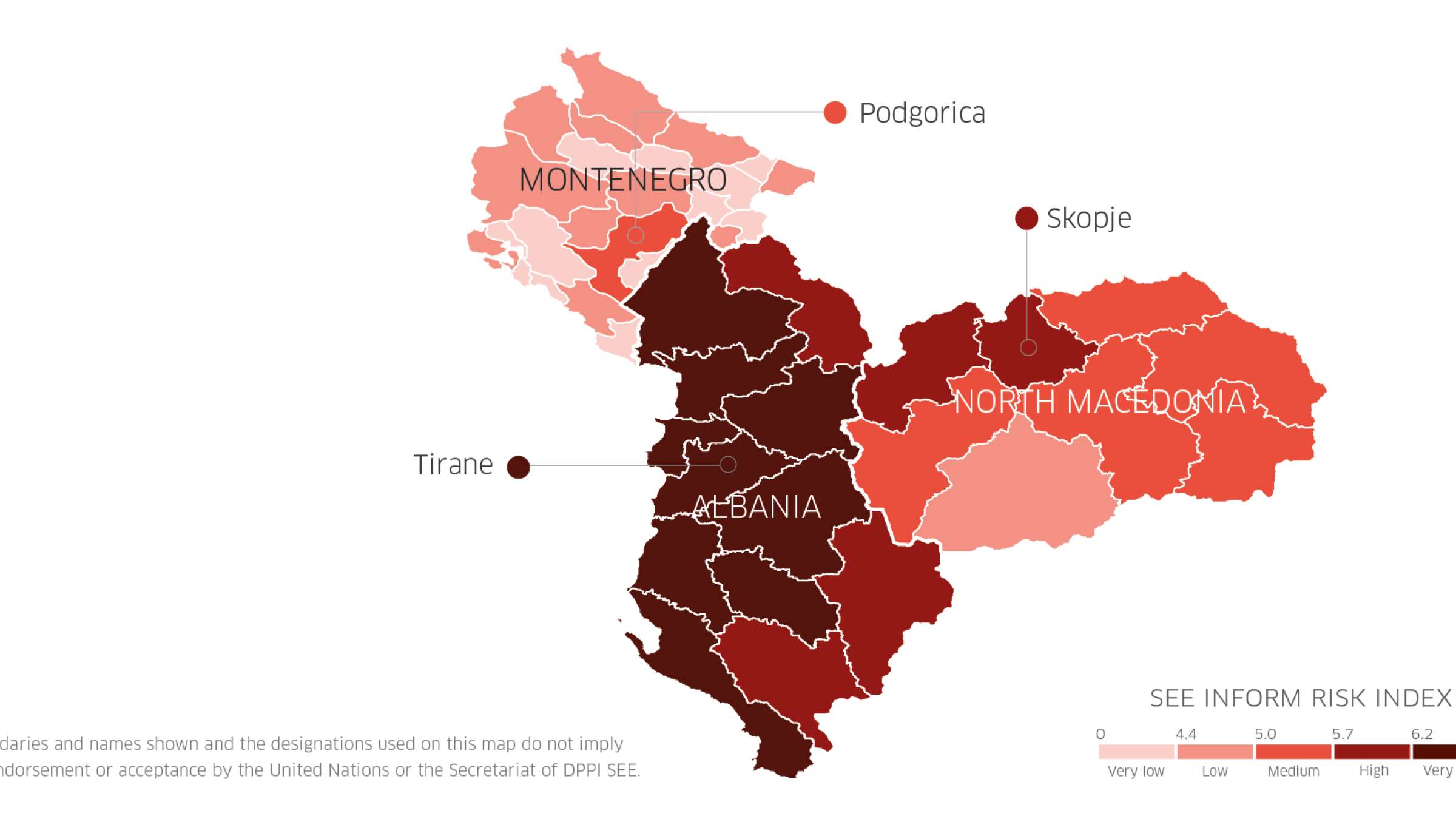Learning Labs: INFORM Subnational Risk Index for South East Europe
Understanding disaster risk is a complex process that requires a multidisciplinary approach. The INFORM Risk Index is a composite indicator developed by the Joint Research Center (EC) as a tool for understanding the risk of humanitarian crisis and disasters. Consisting of three dimensions (Hazard, Vulnerability, and Coping Capacity), the INFORM Subnational Index is the first open source, continuously updated, transparent and reliable tool for understanding crises and disasters at subnational level within a country/region.
This session will give an overview of the process and methodology involved in developing a subnational INFORM risk index, drawing on the example in South East Europe, but relevant for other regions seeking to improve risk analysis and understanding. Establishing a baseline view of disaster risk, its drivers, coping capacity, is a fundamental step in reducing and managing the risk. The INFORM Subnational Risk Index for South Easter Europe (focusing on Albania, Montenegro, North Macedonia, and Romania in the 2nd phase) brings local administrations, governments, international and national organizations, donors and humanitarian workers together to work closely towards a better understanding of disaster risk at local level.
Session Objectives
- Introduce participants to the Subnational INFORM model for South East Europe, challenges & lessons learned.
- Familiarize participants with the development of an INFORM Subnational Index and demonstrate how results can be used as an evidence-based tool for DRM.
Speakers
- Nicholas Ramos - Programme Management Officer, UNDRR Regional Office for Europe and Central Asia - @NikRamo
- Bakhtiyar Ospanov, Chief expert of the Center of Emergency Situations and DRR
- Kazi Shahidur Rahman, Humanitarian Affairs Specialist at UN Resident Coordinator Office Bangladesh
Learn more
The session will aim at technical officers and/or decision makers in the DRR sector, academia, and NGO. Participants may benefit from bringing their own laptop, with installed MS Office package.
Where do we stand
The INFORM initiative started in 2012 and includes organizations from across the multilateral system, including the humanitarian and development sector, donors, and technical partners. UNDRR so far has lead the creation of the INFORM Subnational models from Caucasus and Central Asia (the 2017 model and 2021 model update) and the South East Europe model in 2021. UNDRR is currently working to improve the model through a wider and improved selection of indicators and inclusion of local administrative units. The model is also being updated for Central Asia.
Publication of the most recent results for both regions was in November 2021, followed by the creation of an interactive dashboard to support decisions makers use and process the results. In addition, several associated products were developed, such as an assessment of the health sector based on INFORM results for South East Europe countries, as well as an analysis and detailed overview of disaster risk in North Macedonia, which aims to form a base for further development of DRM in the country.
In the case of the subnational model for Southeastern Europe and Central Asia, progress is continuously communicated with counterparts in the region though an INFORM working group, the Disaster Preparedness and Prevention Initiative for South-Eastern Europe (DPPI SEE), the Center for Emergency Situation and Disaster Risk Reduction (CESDRR) and bilaterally with Sendai Focal points and international partners. Also, links are being established with the initiatives currently present in the region (EU projects aimed for risk assessment at local level, MCR2030, UNDRR stress-testing) to broaden the impact. In the medium term period, for INFORM success and institutionalization, it is critical to further mobilize stakeholders to contribute to the implementation the Sendai Framework by submitting their reports to the Sendai Framework Monitor, the creation of disaster loss databases (critical for risk models development) and development of DRR strategies at a national and local level.
Session guiding questions
- How to mainstream use of the model for the countries involved?
- How can the use of the Index develop capacities, strengthen disaster reporting and databases creation?
- How to enhance the use of the model in areas beyond DRM (support other sectors to use the full potential of INFORM)?

Agenda
Location
BNDCC 2- Mezzanine Floor
Online access
Participation
Open to those registered for the conferenceDetails
Contact
Nicholas Ramos: [email protected] Galiya Ibragimova: [email protected] Dimitar Tockov: [email protected] @twitter: UNDRR Europe & Central Asia @UNDRR_ECA
